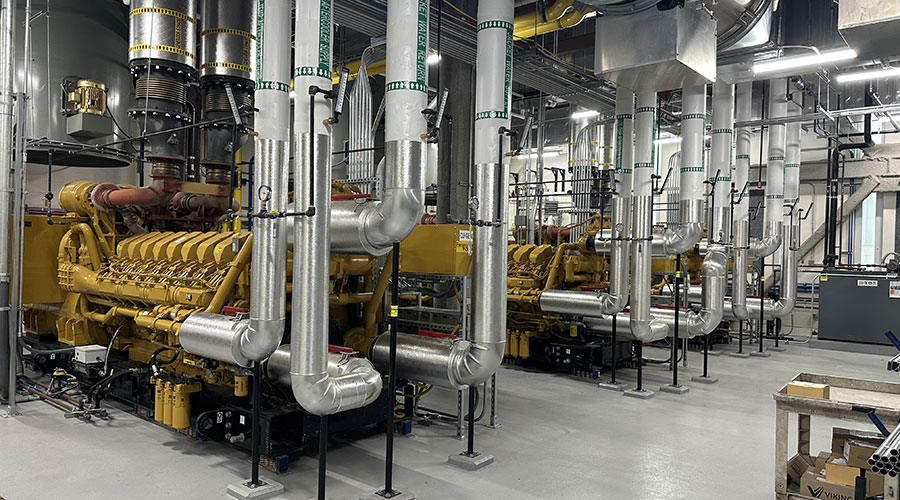Fan Efficiency Grades Can Help Decrease HVAC Energy Usage, Cut Energy Costs
In any given building, two systems consume more energy than everything else combined: lighting and HVAC. According to the U.S. Department of Energy's Energy Efficiency and Renewable Energy (EERE) arm, lighting and conditioning indoor air account for more than 50 percent of a building's total energy use. But it sometimes seems that the landmark shifts in lighting technology during the last decade have gotten all the attention, while news about energy-saving HVAC technologies languishes. But that's changing, particularly as facility managers begin to realize the savings possible with current HVAC technologies. Three opportunities in particular — fan efficiency grades, variable refrigerant flow systems, and energy recovery processes — have come to the fore during the last decade as ways to help decrease HVAC energy usage and cut energy costs.
Fan Efficiency Ratings
Fans consume a significant amount of energy. According to Michael Ivanovich, director of strategic energy initiatives for the Air Movement Control Association (AMCA) International, fans account for 80 percent of the so-called "parasitic" load — that is, HVAC loads other than prime movers like chillers and boilers. Starting in 2007, AMCA began developing a method of rating the efficiency of fans. This work led to fan efficiency grades (FEGs) — a measurement of peak fan efficiency independent of the motor and drive.
Understanding the basic nature of these FEGs is important for savvy facility managers, principally because these efficiency grades, essentially an index of inherent aerodynamic quality, are referenced in last year's International Green Construction Code (IGCC), and the 2013 update of ASHRAE 90.1.
More adoption of the AMCA fan standards is likely, says Ivanovich, as AMCA members begin to work with 2015 International Energy Conservation Code (IECC) language and members of the ASHRAE 189.1 committee.
The gist of AMCA 205 is that:
- It applies only to fan types and sizes covered by the referenced test standards (some products, therefore, such as air curtains, are not covered).
- It defines a new industry metric, FEG, that will help engineers, owners/managers, contractors, and code officials have an indication of how efficient a fan is out of the box.
- It nudges system designers, contractors, and owners who make purchasing decisions to select fans that will operate in the higher-efficiency regions of the fan curve.
Tim Mathson, principal engineer for Greenheck and a member of AMCA's air control task force, says the last point is crucial for fan selection among facility managers. He notes that ASHRAE 90.1 specifies a minimum FEG rating of 67.
"Since the FEG values are based on the peak total efficiency, and the actual fan efficiency varies significantly along a fan curve, there is also a requirement to select the fans within 15 percentage points of their peak total efficiency," Mathson says. "This selection requirement is a key point because it's the real mechanism that will save energy."
As any seasoned facility manager knows, weighing lowest first cost against lowest lifetime cost can be a difficult conversation to have with management, especially in government organizations, where one might be bound by low-bid stipulations. Nevertheless, it's useful to be mindful of these considerations, says Ivanovich.
"One design trend to bear in mind is that fan sizing/selection software often gives a range of fan sizes to meet a given project requirement," he says. Obviously, all of the fans in such a selection will meet airflow and pressure requirements of a system, but, Ivanovich notes, the smaller fans will have to work a lot harder to do so. Smaller fans also have the potential for decreased fan longevity and increased system noise, which, apart from the system efficiency, potentially affects productivity.
Finally, facility managers have to be mindful of "system effects," says Mathson. System effects happen when ductwork and fittings slow the movement of air. That causes fans to work harder and be less efficient, and also often increases system noise and vibration. One way of preventing this inefficiency is to minimize static pressure in the system by providing proper inlet and outlet conditions at air handlers and other equipment where fans are installed, says Ivanovich.
He also cites two other practices that lead to less energy use by fans. First, regularly check the fan schedules in controllers and automation systems. Fans that are off when they should be use the least amount of energy. Secondly, regularly check VFD settings and belt drives to ensure they are properly set and maintained.
Mathson warns that facility managers can't solely focus on fan efficiency; rather, they need to keep a focus on how much energy is being consumed by the fans in the system, he says.
"It's safe to say that the most important factor in fan energy consumption is how much pressure the fan must overcome," Mathson says. "Look for ways to reduce the system pressure by removing or opening up dampers, sealing leaks in ducts, or improving airflow into and out of the fan."
He also notes that owners could consider replacing constant volume systems with variable volume. Then, once the system requirements are minimized, compare the various fan options based on energy consumed.
"Look at the total cost of ownership for a period of time, say five to 10 years," Mathson says. "More efficient fans can often pay for themselves in reduced energy costs in just one to two years."
Related Topics:













